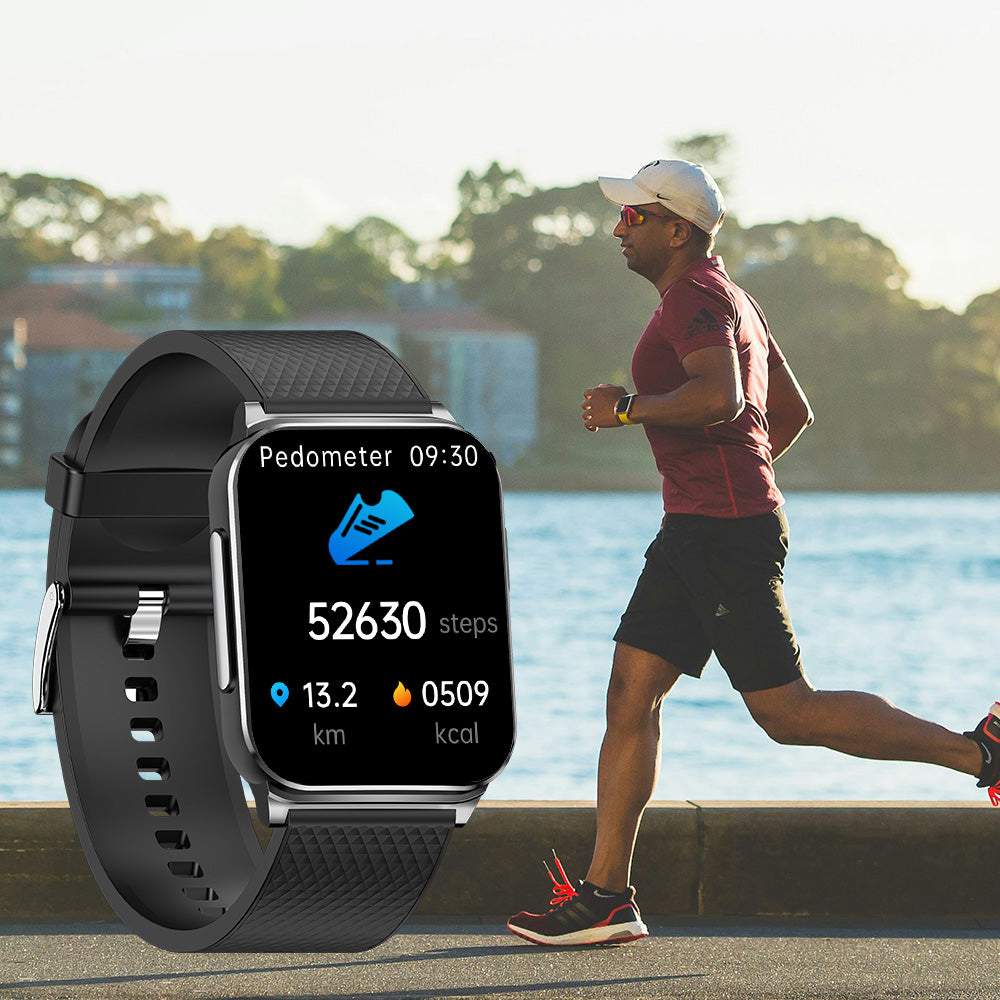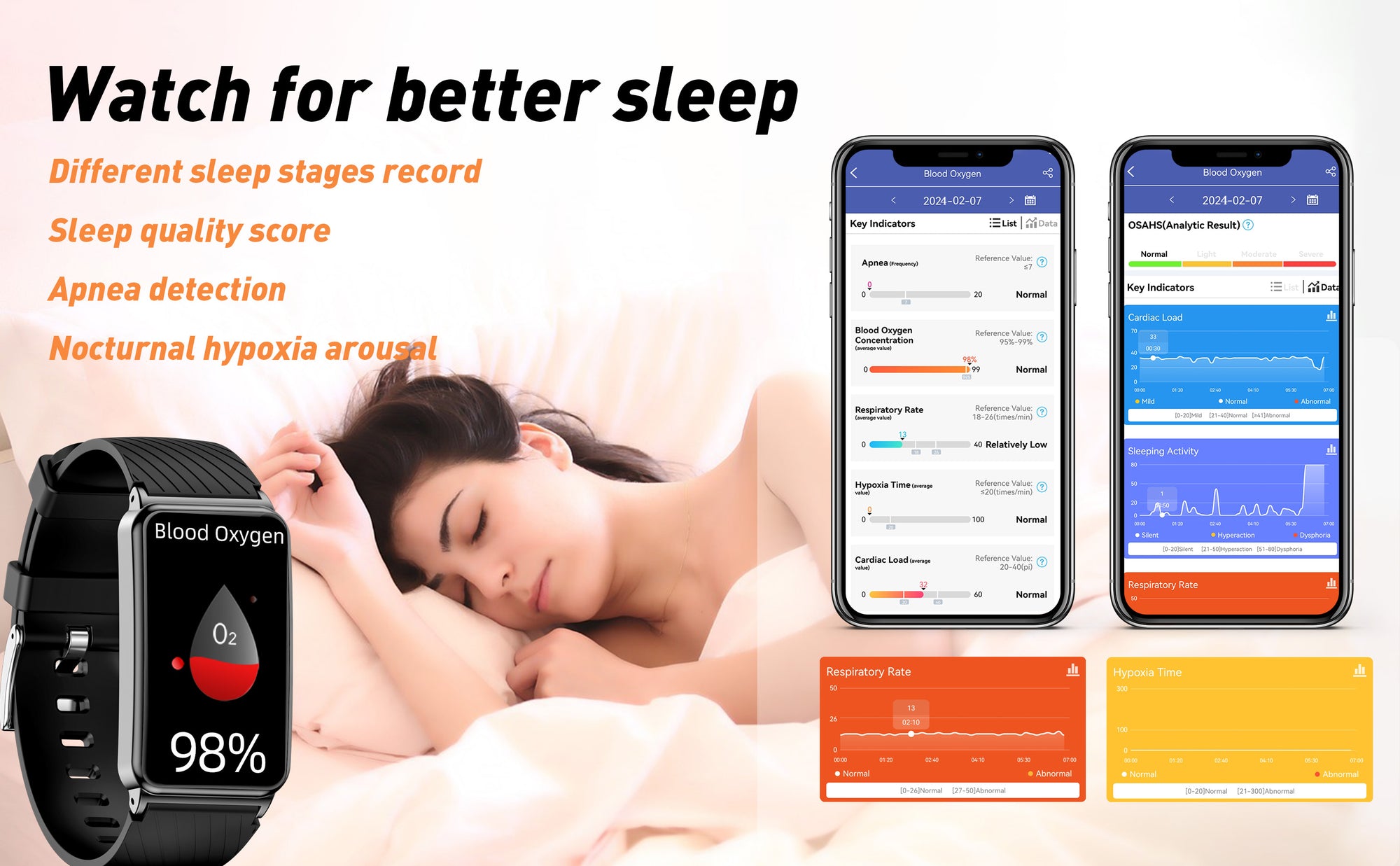How to Ensure Accurate Measurements:
- Stay Relaxed: For the most accurate results, stay calm and still during active testing.
- Proper Position: Sit in a relaxed posture, breathe evenly, and avoid moving or talking. Rest your arms on a table, extended forward and naturally bent. Moving or talking can interfere with the results.
- Correct Fit: The device measures your heart rate using photoplethysmography. The band should be tight enough to fit a small finger between the band and your wrist. A loose fit may lead to measurement failure, while a tight fit can affect blood circulation and skew results.
- Wear Continuously: For accurate 24-hour monitoring, wear the device all day, except when charging or during activities like washing.
Factors Affecting 24-Hour Heart Rate Monitoring:
- Improper Fit: If the device isn’t snug, light leakage and minor movements can affect heart rate and ECG detection.
- Tight Wearing: Wearing the device too tightly, raising your arm, or clenching your fist can disrupt blood circulation and affect readings.
- Individual Differences: Skin color, hair, tattoos, and scars can impact heart rate and ECG measurements, even when worn correctly.
Why Does ECG Measurement Show Noise?
The device measures electrical currents from the skin. If your skin is too dry, the electrodes may fail to detect the currents, leading to inaccurate ECG readings.
What to Do if Measurements Fail:
1. Adjust App Settings: Connect to the app and set your skin tone in personal information to improve detection.2. Check for Dirt: Inspect the bottom of the device for any dirt that might affect the sensors and electrodes, leading to failed measurements.



